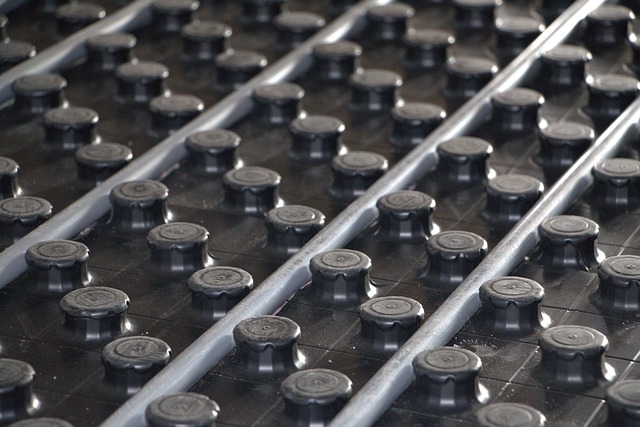Underfloor heating, a growing trend among homeowners, offers sophisticated warmth via water or electricity distribution through embedded pipes. Key benefits include discreet comfort, precise temperature control, energy efficiency, and cost-effectiveness. While radiators are reliable and easy to install, underfloor systems provide consistent heat distribution, outperforming radiators in hot spots and cold patches. Smart thermostats enhance energy efficiency, and DIY installations reduce power consumption. Retrofitting requires consideration of space size, cost, and discreet installation preferences, with underfloor heating specialists recommending it for larger spaces due to efficient heat distribution. Proper installation is crucial to prevent moisture issues.
“Uncover the battle of the heating systems: Underfloor Heating vs Radiators. This comprehensive guide aims to help you make an informed decision as a underfloor heating specialist. We’ll explore the ins and outs of these two popular choices, from understanding the mechanics of underfloor heating—a modern favorite—to examining the traditional radiator‘s enduring appeal. By delving into efficiency, cost, and installation, you’ll discover which system aligns best with your needs.”
- Understanding Underfloor Heating: A Comprehensive Overview
- Radiators: Traditional Heating Solutions and Their Advantages
- Efficiency Comparison: Energy Usage and Cost Savings
- Installation Considerations: Choosing Between Underfloor and Radiators
Understanding Underfloor Heating: A Comprehensive Overview

Underfloor heating is a sophisticated system that has been gaining popularity among homeowners seeking efficient and comfortable warmth. This innovative technology involves the distribution of heated water or electricity through pipes embedded in a floor, providing a uniform and subtle heating experience. Unlike traditional radiators, which are often visible and take up valuable space, underfloor heating offers a discreet and seamless solution. It is a preferred choice for modern interiors, aiming to create an open and uncluttered aesthetic.
As an expert underfloor heating specialist, it’s crucial to understand the system’s intricacies. The process begins with designing a layout that suits the property’s needs, considering factors like room size, floor type, and desired temperature. Once installed, an efficient pump circulates heated water or electricity through flexible mats or pipes, ensuring even heat distribution across the floor. This method not only provides rapid heating but also allows for precise temperature control in individual rooms, making it an energy-efficient and cost-effective option, as evidenced by calculated underfloor heating costs.
Radiators: Traditional Heating Solutions and Their Advantages

Radiators have long been a staple in traditional heating systems, offering a familiar and often reliable method of warming spaces. As an established solution, radiators boast several advantages that have made them a popular choice for many years. One key benefit is their ease of installation; radiators are relatively straightforward to fit into existing or new builds, making them an attractive option for both homeowners and underfloor heating specialists.
These devices work by circulating hot water through their coils, which then releases heat into the surrounding area. This efficient process ensures even warmth across a room, making radiators suitable for various settings, including homes, offices, and public buildings. In colder climates, where efficient heating is crucial, radiators can provide quick and effective solutions, especially when paired with smart thermostats for optimal temperature control. When considering how does underfloor heating work? it’s important to note that while radiators offer direct heat, underfloor systems deliver warmth from below, creating a comfortable and even temperature throughout the space, ideal for when to install underfloor heating in more extreme conditions.
Efficiency Comparison: Energy Usage and Cost Savings

Underfloor heating specialists often highlight its efficiency as a significant advantage over traditional radiators. This system circulates warm water through pipes embedded in the floor, providing consistent and even heat throughout a space. In contrast, radiators rely on convection currents in the air to distribute heat, which can result in hot spots and cold patches. As such, underfloor heating is generally more energy-efficient, especially when combined with modern, smart thermostats that optimize temperature control.
When comparing energy usage, efficient underfloor heating systems can significantly reduce power consumption. This is particularly true for DIY underfloor heating installation, where homeowners can choose the appropriate system for their concrete floors and insulation properties. By design, underfloor heating for concrete floors maintains a more stable indoor climate, reducing the need for constant on-off cycles of heating appliances. Consequently, it offers substantial cost savings over time, making it an attractive option for those looking to lower their energy bills and carbon footprint.
Installation Considerations: Choosing Between Underfloor and Radiators

When considering installation options for either underfloor heating or radiators, several factors come into play, particularly for homeowners looking to retrofit their existing properties. An underfloor heating specialist will often recommend this system for larger spaces due to its efficient heat distribution and ability to provide a uniform warmth throughout the room, making it ideal for modern, open-plan living areas. This method can also be more discreet than traditional radiators, with pipes concealed beneath the floor.
However, if your home has already been fitted with radiators, replacing them might not always be feasible or cost-effective. An emergency plumber Bromsgrove may advise against extensive renovation work for existing homes. Underfloor heating and humidity control are important considerations too; while underfloor systems can contribute to better air quality by reducing the need for frequent convection heating, proper installation is crucial to prevent excessive moisture issues that could affect indoor comfort and even lead to health concerns.
When choosing between underfloor heating and radiators, a key consideration is efficiency. Underfloor heating offers a quieter, more even heat distribution, making it an energy-efficient choice that can lead to significant cost savings over time. However, radiators are quick to respond and adjust to changing temperatures, providing immediate warmth when needed. As a specialist in the field, understanding your home’s layout, insulation, and personal heating preferences is crucial. Both systems have their strengths, but with the right implementation, underfloor heating can create a comfortable, eco-friendly environment, while radiators remain a reliable traditional solution.
